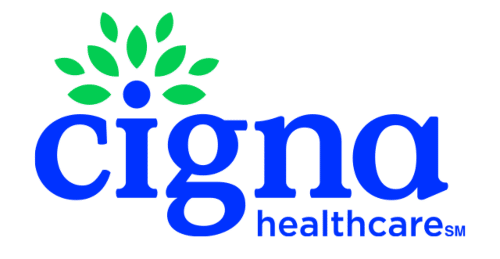Medically induced drug detox treatment is administered under the close supervision of trained healthcare professionals at a licensed treatment center. The detoxification process typically begins with a thorough assessment by clinicians to evaluate the patient’s substance use history, physical dependence, mental health conditions, and any co-occurring disorders. From there, a personalized treatment plan is created to safely manage withdrawal symptoms and reduce the risk of life-threatening complications through the use of medication-assisted treatment options like buprenorphine, methadone, or naltrexone.
Medical detox is crucial because withdrawal syndrome from substances like opioids, alcohol, or benzodiazepines can cause severe side effects, including seizures, heart complications, or intense cravings that could otherwise derail recovery. With medical supervision, patients receive round-the-clock medical care, stabilization support, and access to medications like naloxone or clonidine to ease the detox process. This level of care helps ensure a safer, more comfortable experience, greatly increasing the chances of long-term recovery and setting a strong foundation for further addiction treatment.
What is a Medical Detox?
Medical detox is a structured and supervised process designed to help individuals safely withdraw from drugs or alcohol while managing potentially dangerous withdrawal symptoms. Unlike at-home detox methods, medical detox takes place in a licensed detox center or inpatient treatment facility where healthcare providers can monitor vital signs, administer medications, and respond to complications that may arise during the detoxification process.
This level of care is especially important for individuals with severe substance use disorders, opioid dependence, or co-occurring mental health conditions. Medical detox often includes the use of medication-assisted treatment such as suboxone, methadone, or naltrexone to reduce cravings and ease symptoms associated with opioid withdrawal, alcohol withdrawal, or benzodiazepine detox. By providing 24/7 medical supervision and clinical support, medical detox improves safety, increases comfort, and creates a more stable transition into long-term addiction treatment programs.
Medical Detox vs. Social Detox
Medical detox and social detox are two very different approaches to managing withdrawal symptoms during the early stages of recovery. Medical detox involves intensive care under the supervision of healthcare professionals, often including the use of medications like buprenorphine, methadone, or clonidine to ease cravings, prevent life-threatening complications, and treat withdrawal syndrome. Patients undergoing medical detox typically receive individualized treatment plans, 24/7 monitoring, and medical interventions to address both physical dependence and any underlying mental health conditions.
In contrast, social detox focuses more on emotional support rather than medical care. It often takes place in non-medical settings, such as shelters or community centers, where individuals receive encouragement from support groups or peers but lack access to medications or clinical stabilization. While social detox may work for mild substance use cases, it is generally not recommended for people facing high-risk drug detox situations, opioid withdrawal, alcohol withdrawal, or co-occurring disorders. For those with severe substance abuse issues, a medically supervised detox program offers the safest path toward long-term recovery and well-being.
Is a Medical Detox Always Necessary?
Medical detox is not always necessary, but it is highly recommended for individuals with moderate to severe substance use disorders, especially when withdrawal symptoms could become dangerous. Conditions like opioid withdrawal, alcohol withdrawal, and benzodiazepine dependence can lead to life-threatening complications without proper medical care. In these cases, medical detox treatments using medications like suboxone, methadone, or naltrexone — combined with medical supervision — are critical for safely managing the detox process.
What Substance Abuse Disorders Require Medical Detox?
Certain substance use disorders carry a high risk of dangerous or even life-threatening withdrawal symptoms, making medical detox a necessary first step before beginning further addiction treatment. Without proper medical care, withdrawal from these substances can cause severe health complications, including seizures, respiratory distress, cardiac issues, or intense psychological symptoms. Below are the major substance use disorders that often require detoxification under medical supervision:
- Alcohol Use Disorder: Alcohol withdrawal can cause delirium tremens (DTs), seizures, hallucinations, and heart complications, especially in individuals with long-term or heavy alcohol abuse.
- Opioid Use Disorder: Withdrawal from opioids like heroin, fentanyl, or prescription painkillers can be extremely uncomfortable and lead to severe dehydration, rapid heart rate, and high risk of relapse without medication-assisted treatment.
- Benzodiazepine Use Disorder: Detoxing from benzodiazepines such as Xanax, Ativan, or Valium without medical supervision can result in life-threatening seizures, severe anxiety, and psychosis.
- Barbiturate Use Disorder: Although less common today, barbiturate withdrawal can cause seizures, high fever, cardiovascular collapse, and requires intensive medical care.
- Severe Stimulant Use Disorder: Withdrawal from heavy cocaine or methamphetamine use can cause severe depression, suicidal thoughts, cardiac issues, and requires monitoring to manage mental health risks.
Medical detox is essential for ensuring that patients with these high-risk substance use disorders can stabilize safely under healthcare professionals’ care. At Safe and Sound Treatment, our detox programs are designed to provide the necessary medications, emotional support, and clinical oversight to promote long-term recovery and protect both physical and mental health during this critical first phase of healing.
Medical Detox Process
Medical detox is a carefully structured treatment process designed to help individuals safely eliminate substances from their system under expert medical supervision. Every detox program may look slightly different depending on the patient’s needs, but most follow a general sequence to ensure safety, comfort, and the best possible start to recovery. Below is an overview of the key steps involved in a typical medical detox:
1. Initial Assessment
The first step in medical detox involves a comprehensive assessment by healthcare providers. Clinicians evaluate the patient’s substance use history, physical health, mental health conditions, and risk of severe withdrawal symptoms. This assessment helps determine the appropriate level of care, medications, and support services needed throughout the detoxification process.
2. Stabilization Planning
Based on the initial evaluation, the treatment team creates a personalized stabilization plan. This plan outlines which medications (such as buprenorphine, methadone, or clonidine) will be used to manage cravings and withdrawal symptoms, and how medical supervision will be provided during detox.
3. Medication-Assisted Withdrawal Management
During the detox itself, medications are administered to ease withdrawal syndrome symptoms, reduce the risk of life-threatening complications, and help patients stay physically stable. Medications like naloxone, suboxone, or naltrexone may also be introduced to block drug cravings and prevent relapse during this vulnerable time.
4. 24/7 Monitoring and Medical Care
Throughout the detox process, patients are closely monitored by medical professionals. Vital signs are checked regularly, and healthcare providers adjust treatment as needed to respond to side effects, medical conditions, or mental health concerns that may arise during detoxification.
5. Emotional and Mental Health Support
Since withdrawal can trigger intense emotions, mental health support is often a key part of detox. Therapists or counselors may provide one-on-one support, helping patients cope with anxiety, depression, or psychological cravings during early recovery.
6. Tapering When Appropriate
For certain substances, such as benzodiazepines or opioids, tapering may be used instead of abrupt discontinuation. This means gradually reducing the dosage under medical supervision to minimize withdrawal symptoms and prevent dangerous reactions.
7. Preparation for the Next Phase of Treatment
Once stabilization is achieved, the focus shifts to preparing patients for the next step in their addiction treatment plan. This might involve transitioning to inpatient treatment, outpatient programs, or dual diagnosis care to continue addressing substance use disorders and co-occurring mental health issues for long-term recovery.
Find Medical Detox Treatment at Safe & Sound
If you or a loved one is struggling with substance use and needs a safe, effective way to begin recovery, Safe and Sound Treatment is here to help. Our Costa Mesa detox center offers medically supervised detox programs tailored to each individual’s unique needs, ensuring a safe and supportive start toward long-term recovery. With experienced healthcare providers, evidence-based detox methods, and compassionate care, we are committed to guiding you through every step of the detoxification process.
Don’t wait to take the first step toward healing. Call Safe and Sound Treatment today to learn more about our medical detox programs and start building a healthier, stronger future.













